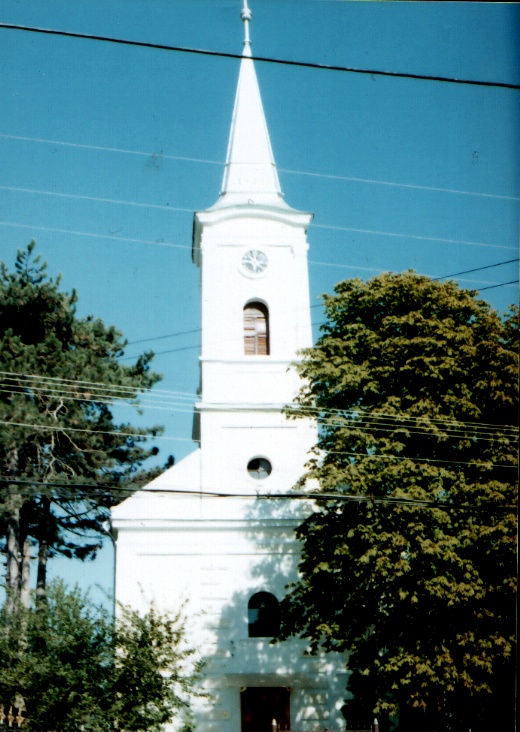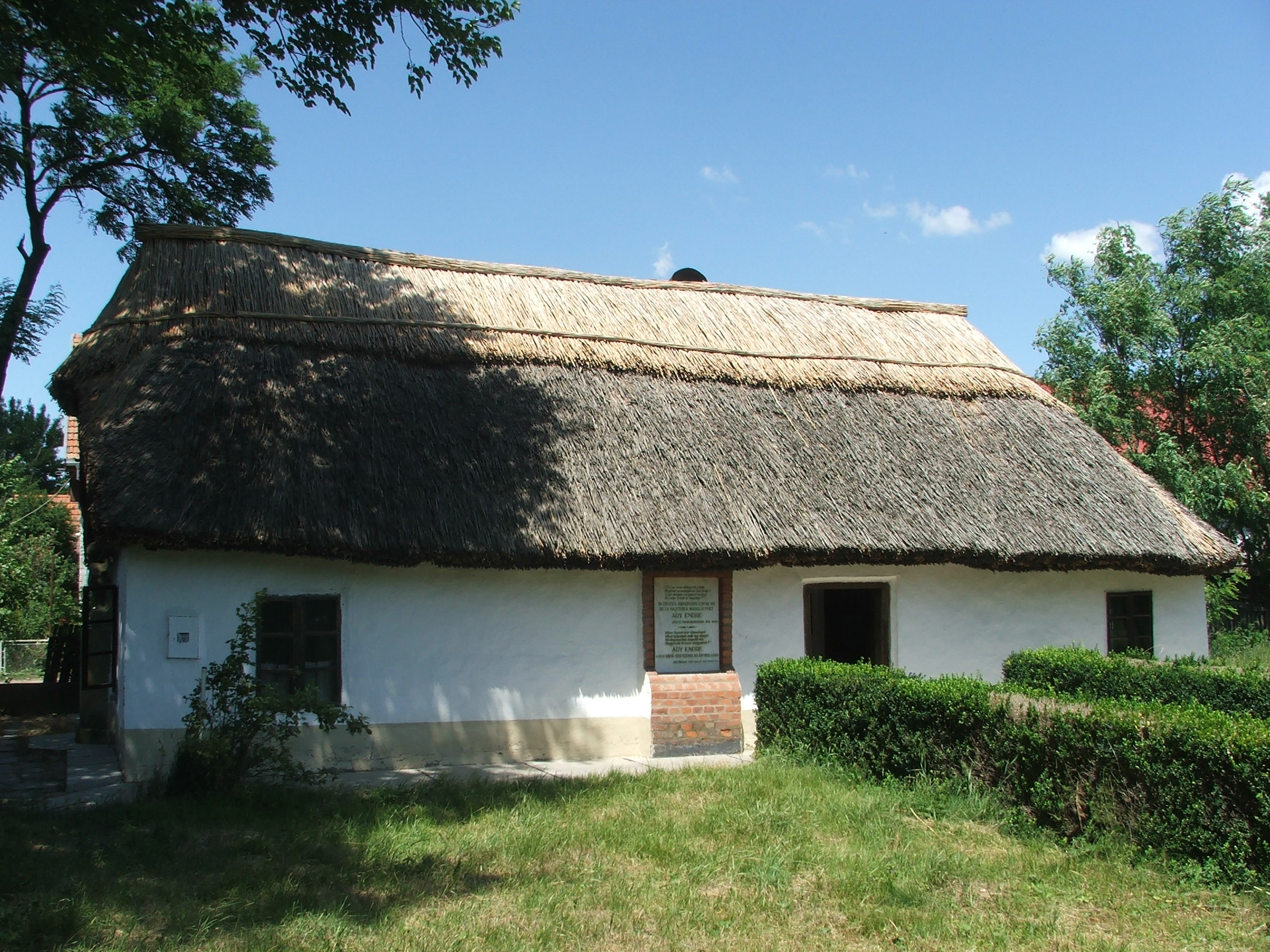|
Moftin
Moftin ( hu, Kismajtény, Hungarian pronunciation: ; german: Kleinmaitingen) is a commune of 4,328 inhabitants situated in Satu Mare County, Romania. Its center is Moftinu Mic, and the commune is composed of seven villages: The commune is located in the south-western part of the county, at a distance of from Carei and from the county seat, Satu Mare, on European route E671. It borders the city of Carei and Căpleni commune to the west, Căuaș commune to the south, Terebești and Craidorolț communes to the east and Doba commune to the north. History On 1 May 1711, at the end of Rákóczi's War of Independence, 12,000 rebels laid down their arms and took an oath of allegiance to the Emperor in the fields outside Kismajtény (Moftinu Mic). Demographics Ethnic groups (2002 census): *Romanians: 57.39% *Hungarians: 31.81% *Roma: 4.78% According to mother tongue, 53.65% speak Romanian as their first language, while 44.59% of the population speak Hungarian: [...More Info...] [...Related Items...] OR: [Wikipedia] [Google] [Baidu] |
Silviu Lung
Silviu Lung (; born 9 September 1956) is a retired Romanian football goalkeeper and current manager. Playing career Club career Silviu Lung was born on 9 September 1956 in Sânmiclăuș, Satu Mare and started to play football in 1971 at Victoria Carei in Divizia C, being helped by a rule that the Romanian Football Federation imposed, which was the use of a junior player in the games from the lower leagues. He went to play Universitatea Craiova, making his Divizia A debut on 29 August 1974 in a 1–0 victory against Politehnica Timișoara. Lung went on to play 14 seasons with Universitatea Craiova, being part of the "Craiova Maxima" generation, helping them win two consecutive league titles in 1980 and 1981, at the first he contributed with only 3 appearances because he was diagnosed with hepatitis and at the second he played 20 games. He also won the Cupa României four times, in the years 1977, 1978, 1981 and 1983. Silviu Lung was an integral part of "U" Craiova's team th ... [...More Info...] [...Related Items...] OR: [Wikipedia] [Google] [Baidu] |
Carei
Carei (; , ; /, yi, , ) is a city in Satu Mare County, northwestern Romania, near the border with Hungary. The city administers one village, Ianculești ( hu, Szentjánosmajor). History The first mention of the city under the name of "Karul" dates from 1320, and as "Károly" in 1325, however, the city is known to have existed since 1264, as it was the domain of the Kaplony clan and the center of the Károlyi family's personal domain that settled in the region shortly after the arrival of the Hungarians. The name of the city comes from the word "karul" (in modern Hungarian "karvaly"). The etymology of the word can be traced back to the ancient Turkish language, the word meaning sparrow. Another theory is that the city was named after the Károlyi family. King Louis I of Hungary permitted the organization of weekly market gatherings on Saturdays in Carei in 1346, as a result of the military achievements of the Károlyi family. The development of regional trade in the region ... [...More Info...] [...Related Items...] OR: [Wikipedia] [Google] [Baidu] |
Satu Mare County
Satu Mare County ( ro, Județul Satu Mare, ) is a county (Counties of Romania, județ) of Romania, on the border with Hungary and Ukraine. The capital city is Satu Mare. Name In Hungarian language, Hungarian, it is known as ''Szatmár megye'', in German language, German as ''Kreis Sathmar'', in Ukrainian language, Ukrainian as Сату-Маре, and in Slovak language, Slovak as ''Satmárska župa''. Demographics Satu Mare is a multicultural city, with a population mix of Romanian, Hungarian, Roma, German, and other ethnicities. In 2002, Satu Mare County had a population of 367,281 and the population density was .National Institute of Statistics, "Populația după etnie"'' * Romanians – 58.8% * Hungarians in Romania, Hungarians – 35.2% * Romani people, Roma – 3.7% * Germans (Satu Mare Swabians, Sathmar Swabians) – 1.7% * Ukrainians, Slovaks, other In 2011, its population was 329,079 and population density was . * Romanians – 57.73% * Hungarians – 34.5% * Romani p ... [...More Info...] [...Related Items...] OR: [Wikipedia] [Google] [Baidu] |
Communes Of Romania
A commune (''comună'' in Romanian language, Romanian) is the lowest level of administrative subdivision in Romania. There are 2,686 communes in Romania. The commune is the rural subdivision of a Counties of Romania, county. Urban areas, such as towns and cities within a county, are given the status of ''Cities in Romania, city'' or ''Municipality in Romania, municipality''. In principle, a commune can contain any size population, but in practice, when a commune becomes relatively urbanised and exceeds approximately 10,000 residents, it is usually granted city status. Although cities are on the same administrative level as communes, their local governments are structured in a way that gives them more power. Some urban or semi-urban areas of fewer than 10,000 inhabitants have also been given city status. Each commune is administered by a mayor (''primar'' in Romanian). A commune is made up of one or more villages which do not themselves have an administrative function. Communes ... [...More Info...] [...Related Items...] OR: [Wikipedia] [Google] [Baidu] |
Craidorolț
Craidorolț ( hu, Királydaróc, Hungarian pronunciation: ) is a commune of 2,215 inhabitants (2011) situated in Satu Mare County, Romania. It is composed of five villages: Demographics Ethnic groups (2011 census): *Romanians: 53% *Hungarians: 24% *Roma: 15% *Ukrainians: 3% 55% had Romanian as first language, 37% Hungarian and 3% Ukrainian. 2011 census results, , accessed 10 March 2020. Natives * |
Romany People
The Romani (also spelled Romany or Rromani , ), colloquially known as the Roma, are an Indo-Aryan ethnic group, traditionally nomadic itinerants. They live in Europe and Anatolia, and have diaspora populations located worldwide, with significant concentrations in the Americas. In the English language, the Romani people are widely known by the exonym Gypsies (or Gipsies), which is considered pejorative by many Romani people due to its connotations of illegality and irregularity as well as its historical use as a racial slur. For versions (some of which are cognates) of the word in many other languages (e.g., , , it, zingaro, , and ) this perception is either very small or non-existent. At the first World Romani Congress in 1971, its attendees unanimously voted to reject the use of all exonyms for the Romani people, including ''Gypsy'', due to their aforementioned negative and stereotypical connotations. Linguistic and genetic evidence suggests that the Roma originated in ... [...More Info...] [...Related Items...] OR: [Wikipedia] [Google] [Baidu] |
Hungarian People
Hungarians, also known as Magyars ( ; hu, magyarok ), are a nation and ethnic group native to Hungary () and Kingdom of Hungary, historical Hungarian lands who share a common Hungarian culture, culture, Hungarian history, history, Magyar tribes, ancestry, and Hungarian language, language. The Hungarian language belongs to the Uralic languages, Uralic language family. There are an estimated 15 million ethnic Hungarians and their descendants worldwide, of whom 9.6 million live in today's Hungary. About 2–3 million Hungarians live in areas that were part of the Kingdom of Hungary before the Treaty of Trianon in 1920 and are now parts of Hungary's seven neighbouring countries, Hungarians in Slovakia, Slovakia, Hungarians in Ukraine, Ukraine, Hungarians in Romania, Romania, Hungarians in Serbia, Serbia, Hungarians of Croatia, Croatia, Prekmurje, Slovenia, and Hungarians in Austria, Austria. Hungarian diaspora, Significant groups of people with Hungarian ancestry live in various oth ... [...More Info...] [...Related Items...] OR: [Wikipedia] [Google] [Baidu] |
Romanian People
The Romanians ( ro, români, ; dated exonym ''Vlachs'') are a Romance-speaking ethnic group. Sharing a common Romanian culture and ancestry, and speaking the Romanian language, they live primarily in Romania and Moldova. The 2011 Romanian census found that just under 89% of Romania's citizens identified themselves as ethnic Romanians. In one interpretation of the 1989 census results in Moldova, the majority of Moldovans were counted as ethnic Romanians.''Ethnic Groups Worldwide: A Ready Reference Handbook By'' David Levinson, Published 1998 – Greenwood Publishing Group.At the time of the 1989 census, Moldova's total population was 4,335,400. The largest nationality in the republic, ethnic Romanians, numbered 2,795,000 persons, accounting for 64.5 percent of the population. Source U.S. Library of Congress "however it is one interpretation of census data results. The subject of Moldovan vs Romanian ethnicity touches upon the sensitive topic ofMoldova's national identit ... [...More Info...] [...Related Items...] OR: [Wikipedia] [Google] [Baidu] |
Rákóczi's War Of Independence
Rákóczi's War of Independence (1703–11) was the first significant attempt to topple the rule of the Habsburgs over Hungary. The war was conducted by a group of noblemen, wealthy and high-ranking progressives and was led by Francis II Rákóczi and resigned soldiers and peasants fought alongside the noblemen. The insurrection was unsuccessful, ending with the Treaty of Szatmár; however, the Hungarian nobility managed to partially satisfy Hungarian interests. Prelude With the Treaty of Karlowitz in 1699, the Ottoman Empire renounced almost all of its claims to some of its territories, which were conquered from the medieval Kingdom of Hungary after 1526. The nobility was against Habsburg rule because the lands formerly taken away from them by the Ottomans were returned only to those who could prove their right to own the property and could pay 10% of its worth to the Habsburgs. If they failed to do so, the property went to creditors of the Empire. The peasant class turned aga ... [...More Info...] [...Related Items...] OR: [Wikipedia] [Google] [Baidu] |
Doba, Satu Mare
Doba ( hu, Szamosdob, pronounced: ) is a commune of 2,760 inhabitants (2011) situated in Satu Mare County, Romania. It is composed of five villages: Demographics Ethnic groups (2011 census): *Romanians: 61% *Hungarians: 19% *Roma: 13% *Ukrainians: 4% 61% had Romanian as first language, 23% Hungarian, 9% Romani and 3% Ukrainian. 2011 census results, Institutul Național de Statistică
The National Institute of Statistics ( ro, Institutul Național de Statistică, INS) is a Romanian government age ...
[...More Info...] [...Related Items...] OR: [Wikipedia] [Google] [Baidu] |
Căuaș
Căuaș ( hu, Érkávás, Hungarian pronunciation: ) is a commune of 2,350 inhabitants situated in Satu Mare County, Crișana, Romania. It is composed of six villages: *Ady Endre / Érmindszent or Adyfalva *Căuaș *Ghenci / Gencs *Ghilești / Illéd *Hotoan / Érhatvan *Rădulești / Újtanya Demographics Ethnic groups (2011 census): *Romanians: (46.7%) *Hungarians: (35.1%) *Roma: (17.9%) History In July 2011, a Thracian settlement dating to 1050–1750 BC has been discovered in Căuaș by a joint research group formed by Romanian Romanian may refer to: *anything of, from, or related to the country and nation of Romania **Romanians, an ethnic group **Romanian language, a Romance language *** Romanian dialects, variants of the Romanian language ** Romanian cuisine, tradition ... and German archaeologists.http://www.adevarul.ro/locale/satu_mare/Descoperire_istorica_la_Cauas_0_527347500.html Thracian settlement discovered in Căuaș Ady Endre Memorial House Three kilometres from ... [...More Info...] [...Related Items...] OR: [Wikipedia] [Google] [Baidu] |
Terebești
Terebești ( hu, Krasznaterebes, pronounced: ) is a commune of 1,647 inhabitants situated in Satu Mare County, Romania Romania ( ; ro, România ) is a country located at the crossroads of Central Europe, Central, Eastern Europe, Eastern, and Southeast Europe, Southeastern Europe. It borders Bulgaria to the south, Ukraine to the north, Hungary to the west, S .... It is composed of four villages: Aliza (''Alizmajor''), Gelu (''Vadaspuszta''), Pișcari (''Piskáros'') and Terebești. References Communes in Satu Mare County {{SatuMare-geo-stub ... [...More Info...] [...Related Items...] OR: [Wikipedia] [Google] [Baidu] |



